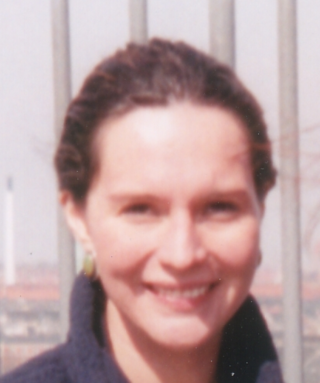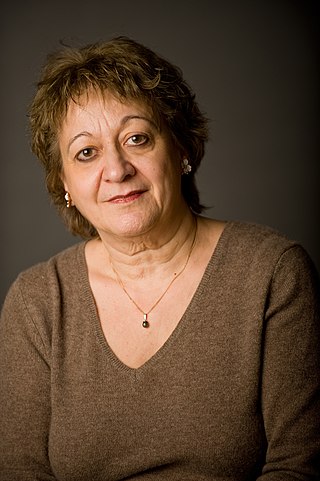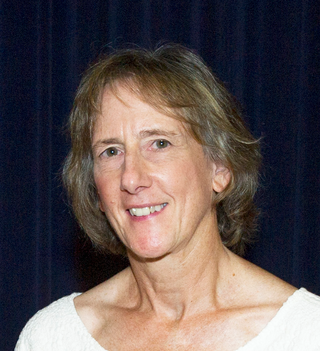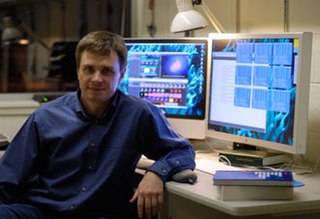
The American Astronomical Society is an American society of professional astronomers and other interested individuals, headquartered in Washington, DC. The primary objective of the AAS is to promote the advancement of astronomy and closely related branches of science, while the secondary purpose includes enhancing astronomy education and providing a political voice for its members through lobbying and grassroots activities. Its current mission is to enhance and share humanity's scientific understanding of the universe as a diverse and inclusive astronomical community.

The Center for Astrophysics | Harvard & Smithsonian (CfA), previously known as the Harvard–Smithsonian Center for Astrophysics, is an astrophysics research institute jointly operated by the Harvard College Observatory and Smithsonian Astrophysical Observatory. Founded in 1973 and headquartered in Cambridge, Massachusetts, United States, the CfA leads a broad program of research in astronomy, astrophysics, Earth and space sciences, as well as science education. The CfA either leads or participates in the development and operations of more than fifteen ground- and space-based astronomical research observatories across the electromagnetic spectrum, including the forthcoming Giant Magellan Telescope (GMT) and the Chandra X-ray Observatory, one of NASA's Great Observatories.
The Bruno Rossi Prize is awarded annually by the High Energy Astrophysics division of the American Astronomical Society "for a significant contribution to High Energy Astrophysics, with particular emphasis on recent, original work". Named after astrophysicist Bruno Rossi, the prize is awarded with a certificate and a gift of USD $500, and was first awarded in 1985 to William R. Forman and Christine Jones Forman "for pioneering work in the study of X-ray emission from early type galaxies". It has been awarded 32 times. In 2010, the prize was awarded to William B. Atwood, Peter Michelson and the Fermi Gamma-ray Space Telescope team "for enabling, through the development of the Large Area Telescope, new insights into neutron stars, supernova remnants, cosmic rays, binary systems, active galactic nuclei, and gamma-ray bursts". In 2013, the prize was awarded to Roger W. Romani of Leland Stanford Junior University and Alice Harding of Goddard Space Flight Center for their work in developing the theoretical framework underpinning the many exciting pulsar results from Fermi Gamma-ray Space Telescope.
Stanford Earl Woosley is a physicist, and Professor of Astronomy and Astrophysics. He is the director of the Center for Supernova Research at University of California, Santa Cruz. He has published over 300 papers.

Alyssa Ann Goodman is the Robert Wheeler Willson Professor of Applied Astronomy at Harvard University, co-Director for Science at the Radcliffe Institute for Advanced Study, Research Associate of the Smithsonian Institution, and the founding director of the Harvard Initiative in Innovative Computing.

William Nielsen Brandt is the Verne M. Willaman Professor of Astronomy & Astrophysics and a professor of physics at the Pennsylvania State University. He is best known for his work on active galaxies, cosmological X-ray surveys, starburst galaxies, normal galaxies, and X-ray binaries.

Jean Hebb Swank is an astrophysicist who is best known for her studies of black holes and neutron stars.
Irwin Ira Shapiro is an American astrophysicist and Timken University Professor at Harvard University. He has been a professor at Harvard since 1982. He was the director of the Center for Astrophysics | Harvard & Smithsonian from 1982 to 2004.

Alicia Margarita Soderberg is an American astrophysicist whose research focused on supernovae. She was an assistant professor of Astronomy at Harvard University and a postdoctoral fellow at the Harvard-Smithsonian Center for Astrophysics.
Jonathan Christopher McDowell is an astronomer and astrophysicist at the Harvard–Smithsonian Center for Astrophysics. He is a staff member at the Chandra X-ray Center. McDowell is the author and editor of Jonathan's Space Report, an e-mail-distributed newsletter documenting satellite launches.
Felix A. Aharonian is a physicist and astrophysicist. He is a recognized authority on the origin of cosmic rays, and has written books and research papers on astroparticle physics, and cosmology.

Chryssa Kouveliotou is a Greek astrophysicist. She is a professor at George Washington University and a retired senior technologist in high-energy astrophysics at NASA's Marshall Space Flight Center in Huntsville, Alabama.

Tracy Robyn Slatyer is a professor of particle physics with a concentration in theoretical astrophysics with tenure at MIT. She was a 2014 recipient of the Rossi Prize for gamma ray detection of Fermi bubbles, which are unexpected large structure in our galaxy. Her research also involves seeking explanations for dark matter and the gamma ray haze at the center of the Milky Way. In 2021, she was awarded a New Horizons in Physics Prize for "major contributions to particle astrophysics, from models of dark matter to the discovery of the "Fermi Bubbles."

Alice Kust Harding is an American astrophysicist at the NASA Goddard Space Flight Center, Greenbelt, Maryland.
Sheperd "Shep" S. Doeleman is an American astrophysicist. His research focuses on super massive black holes with sufficient resolution to directly observe the event horizon. He is a senior research fellow at the Center for Astrophysics | Harvard & Smithsonian and the Founding Director of the Event Horizon Telescope (EHT) project. He led the international team of researchers that produced the first directly observed image of a black hole.
Giovanni Fazio is an American physicist at Center for Astrophysics | Harvard & Smithsonian. He is an astrophysicist who has initiated and participated in multiple observation programs.

Alexey Vikhlinin is a Russian-American astrophysicist notable for achievements in the astrophysics of high energy phenomenon, namely galaxy cluster cosmology and the design of space-based X-ray observatories. He is currently a senior astrophysicist at the Smithsonian Astrophysical Observatory, part of the Center for Astrophysics | Harvard & Smithsonian in Cambridge, Massachusetts. He was recently the Science and Technology Definition Team (STDT) Community Co-Chair for the Lynx X-ray Observatory, a NASA-funded Large Mission Concept Study under consideration by the 2020 Decadal Survey on Astronomy and Astrophysics.

Péter István Mészáros is a Hungarian-American theoretical astrophysicist, best known for the Mészáros effect in cosmology and for his work on gamma-ray bursts.
Aneta Siemiginowska is a Polish-American astrophysicist whose research involves high-energy cosmic objects including supermassive black hole, quasars, blazars, active galaxies, and astrophysical jets. She works at the Center for Astrophysics | Harvard & Smithsonian as a senior astrophysicist in the Chandra X-ray Center.
Christopher Thompson is a Canadian astronomer and astrophysicist. He is a professor of astronomy at the University of Toronto Canadian Institute for Theoretical Astrophysics (CITA).











